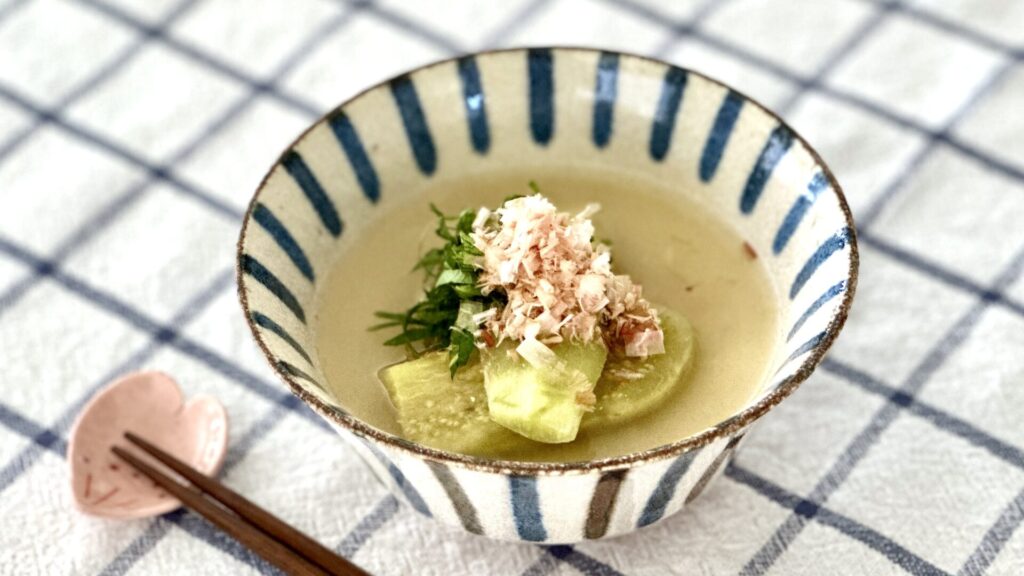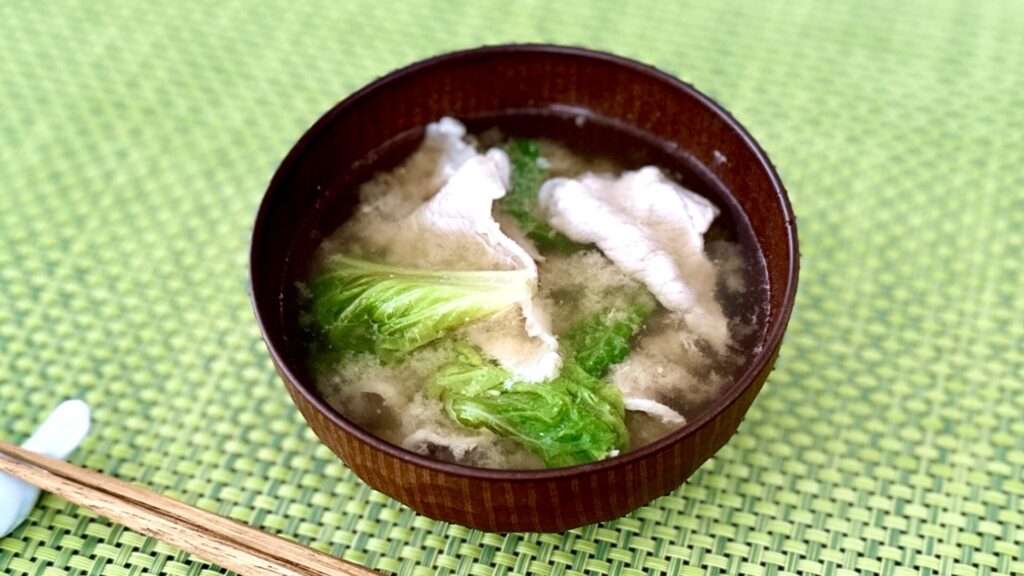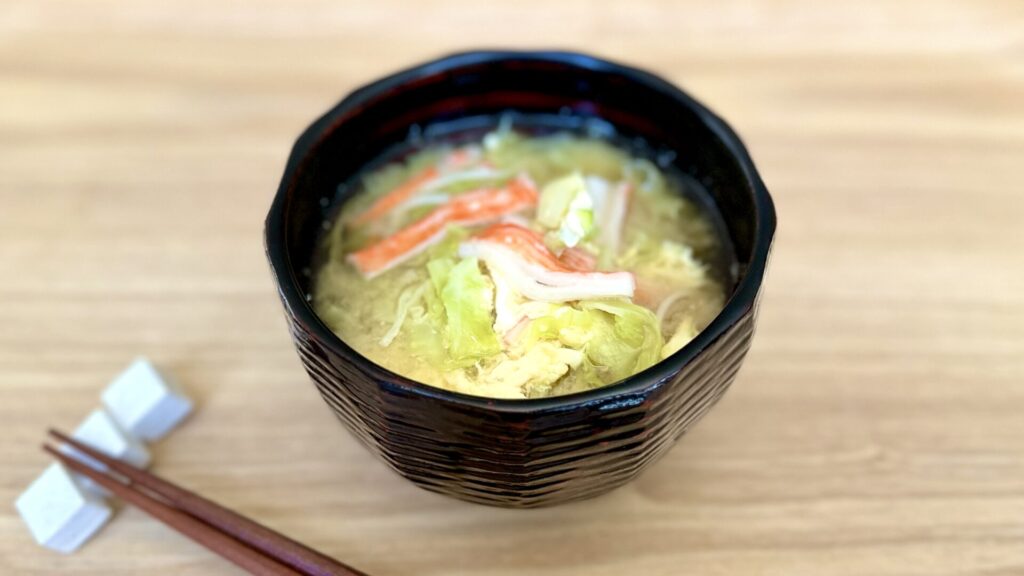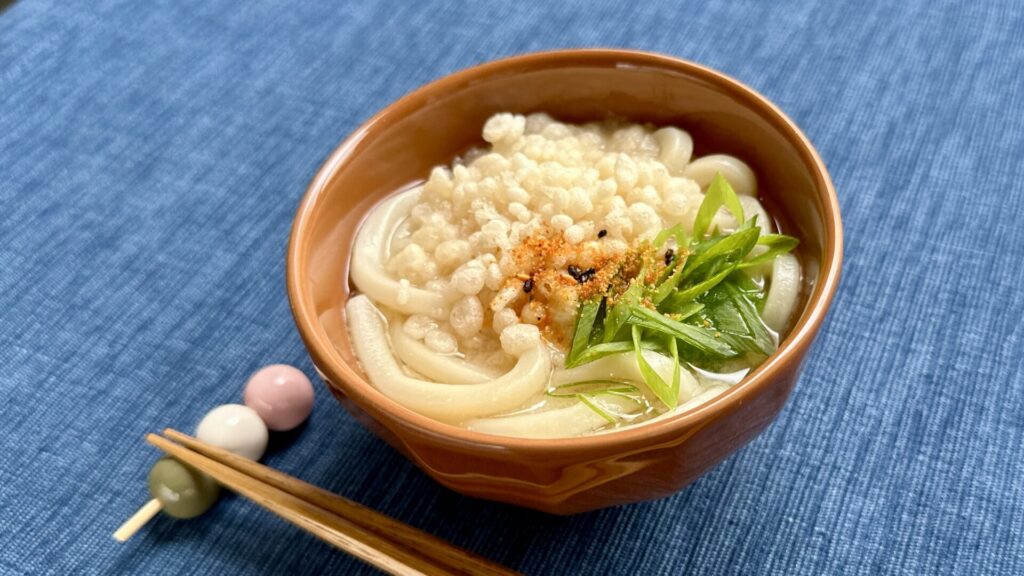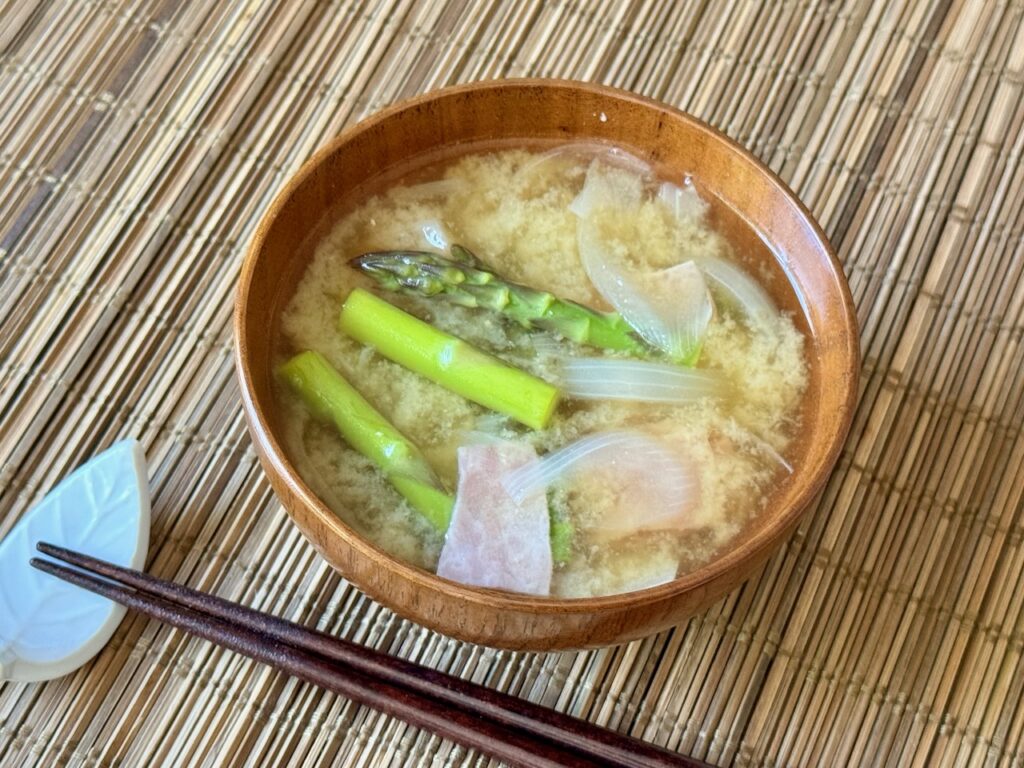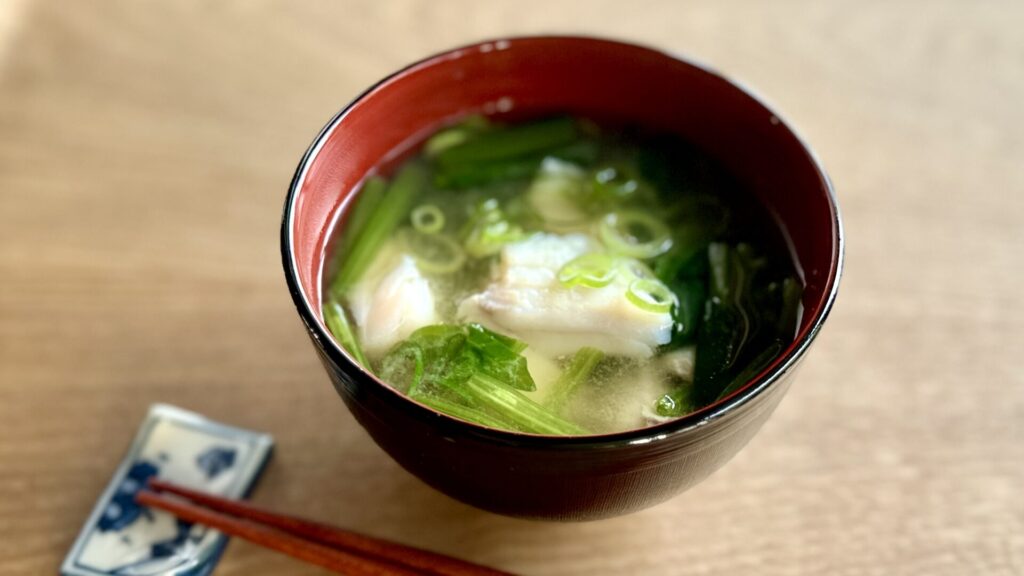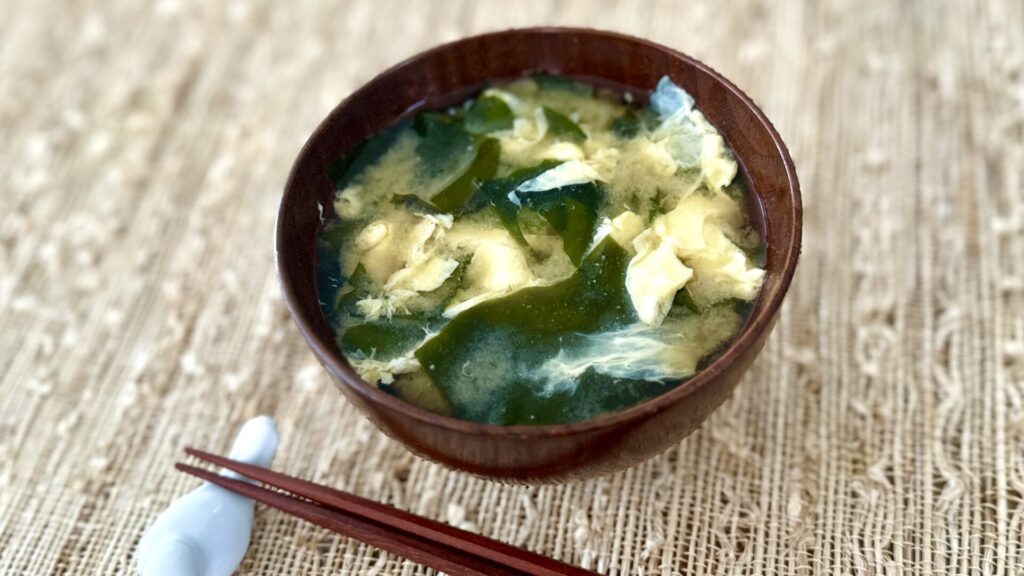Today’s miso soup features pork and white button mushrooms. Use ordinary white mushrooms that can be found at any local store. While they don’t have as strong a flavor as shiitake mushrooms, not everyone always wants distinct mushroom flavors in their miso soup. White button mushrooms have just enough umami flavor for everyday soup. Pork adds more savory flavor, but you can substitute with tofu or other vegetables if you prefer a milder taste. Dashi is omitted here because there are rich flavors from the pork and mushrooms. It’s a very easy but satisfying miso soup. Hope you give it a try!
Today’s miso soup is cold miso soup with eggplant. The eggplant is simply cooked in the microwave, significantly reducing stovetop cooking time. During hot days, you want to minimize heat-based cooking as much as possible! All ingredients should be well-chilled in the fridge so that the end product is nicely cold. Prepare this in the morning, and you’ll have a wonderfully cold soup for dinner. Shiso leaves add a refreshing herbal taste, but you can substitute with green onion if you can’t find them. We hope this soup helps you cool down!
Today’s miso soup features Shabu Shabu pork and leafy green lettuce. Shabu Shabu pork is paper-thin pork loin (or even pork belly), cooked by swishing it in the miso soup. Because the pork is very thin, it cooks through quickly. Rich umami flavor from the pork enriches the soup, giving it a wonderful taste. Lettuce adds a nice crunchy texture to the dish, so try not to cook it too long. Although this is another super easy miso soup, you still get a hearty and delicious result that pairs well with any meal or stands strong on its own with steamed rice. Hope you give it a try!
Today’s miso soup features imitation crab. While imitation crab may not sound like a high-quality ingredient, it has a lot of umami flavor that enhances the base of the miso soup. Imitation crab, or Kanikama in Japanese, is made from fish paste (primarily pollock) that resembles crab meat. It contains no fat and is high in protein, making it an ideal ingredient for those on a diet. Additionally, it’s rich in calcium, which is an added bonus. Combined with cabbage and eggs, this makes for a delicious and filling miso soup suitable for any meal of the day. Hope you give it a try!
Today’s miso soup features mushrooms, spinach, and melting cheese. Miso and cheese are surprisingly good together since both are fermented foods. The umami flavors from the ingredients enhance each other, allowing you to achieve a rich and deep taste with little effort. Mushrooms and spinach add even more flavor and nutrition. This creamy miso soup is perfect with toast in the morning or sandwiches for lunch. It’s super quick to make and delicious! I hope you give it a try.
Today’s miso soup features Udon noodles. Udon noodles, thick wheat flour noodles typically found in noodle soup dishes with clear broth, are also a great addition to miso soup. Miso soup with dense and chewy Udon is hearty and filling, making it a perfect side dish for any meals or a light lunch. You can use frozen or dried Udon, whichever is available, but be sure to defrost or cook the dried noodles before adding them to the miso soup. We’ve added Tenkasu tempura bits as a topping, which adds richness to the soup. If you want a little kick to the dish, sprinkle some Shichimi hot pepper. Hope you like it!
Today’s miso soup is made with asparagus, onion, and ham. This is a quick and easy miso soup to make when asparagus is in season. Anytime from March through June, bundles of fresh asparagus are featured in the produce section of grocery stores. Asparagus is incredibly versatile and you can use it in any types of Japanese cooking from ohitashit to stir-frying (more asparagus recipes here!) Here we made a simple miso soup with onion and ham. It’s so easy to make with ingredients you already have at home.
Today’s miso soup features cod and spinach. Cod, known for its mild-flavored white meat that is easy to eat for many people worldwide, is just right for everyday miso soup too. By salting the fish and removing the moisture that rises to the surface before cooking, the unwanted fishy smell can be eliminated, leaving only the pleasant cod flavor in the soup. The only thing to be cautious of is that the residue of the salt may cause the soup to become too salty. Add a smaller amount of miso paste than usual initially, and gradually add more as needed to avoid making it too salty. Spinach, or any leafy green vegetables, can provide extra nutrition to the dish, resulting in a perfectly tasty and healthy miso soup that complements any meal. I hope you give it a try!
Today’s miso soup features Wakame seaweed and eggs. This may be our easiest and quickest miso soup yet. Wakame doesn’t need to be rehydrated; it can be added directly to the Dashi, and it will soften in the soup. Eggs add good protein and substance to this miso soup, and they’ll be cooked in no time. This is a perfect miso soup for breakfast or a busy weeknight dinner. Hope you give it a try!
Today’s miso soup is made with vegetable broth. You can clean out any leftover vegetables from your fridge, cooking them in convenient store-bought broth. Then, season with the miso paste of your choice to create an easy-to-make, tasty miso soup for any time of day. Even without dashi, this miso soup offers plenty of umami flavor and a touch of natural sweetness from the vegetables and broth. The only thing you need to be careful about is adjusting the amount of miso paste depending on the type of vegetable broth you use. Many store-bought broths contain sodium, so add the miso paste gradually to avoid it becoming too salty. Other than that, this healthy miso soup is great because it’s not only delicious but also incredibly nourishing. Plus, all the ingredients can be found locally without a trip to the Japanese market. Vegetarian and vegan-friendly too. I hope you give this a try!

